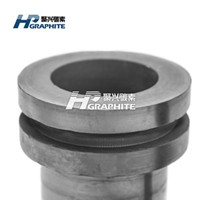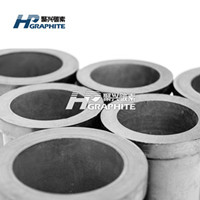Graphite crucible production process

Graphite crucible production process
The graphite crucible described in the overview production is a refractory graphite crucible made of crystalline natural graphite as the main raw material and plastic refractory clay as the binder. It is mainly used for smelting special alloy steel and melting non-ferrous metals and their alloys. In terms of product performance and application, graphite crucible is an integral part of refractory.


Crucibles can be divided into graphite crucibles, clay crucibles and metal crucibles. In the graphite crucible, there are three kinds of common graphite crucible, special-shaped graphite crucible and high-purity graphite crucible. Due to different performance, use and use conditions, various types of graphite crucibles also differ in raw materials, production methods, process technology and product models and specifications. The main raw material of graphite crucible is crystalline natural graphite. So it maintains the original physical and chemical properties of natural graphite. That is, it has good thermal conductivity and high temperature resistance. In the process of high temperature use, the coefficient of thermal expansion is small, and it has certain strain resistance to rapid heat and rapid cooling. It has strong corrosion resistance to acid and alkaline solutions and excellent chemical stability. The crucible has many models and specifications, which is not limited by the production scale, batch size and smelting material varieties are not limited, can be arbitrarily selected, applicability is strong, and can ensure the purity of the smelting material. Graphite crucible, because of the above excellent performance, so in metallurgy, casting, machinery, chemical and other industrial departments, is widely used in the smelting of alloy tool steel and nonferrous metals and their alloys smelting. And has a good technical and economic effect.
Crucible types are generally divided into three categories: the first type is copper crucible, with its specification "No."; The second type is copper alloy crucible, with 100 numbers for super round and 100 numbers for round. The third type of steel crucible has 100 numbers. Crucible specification (size), usually indicated by serial size, crucible no. 1 has the capacity to melt 1000g of brass and its weight is 180g. The melting amount of crucible when melting different metals or alloys can be calculated by multiplying the unit weight specification number of crucible by the corresponding metal and alloy coefficient.
Crucible production materials can be summarized into three types: the first is crystalline natural graphite, the second is plastic refractory clay, and the third is calcined hard kaolin skeleton clinker. In recent years, high temperature resistant synthetic materials, such as silicon carbide, alumina emery and ferrosilicon, have been used as the framework clinker of the crucible. This clinker has remarkable effect on improving crucible product quality, crucible density and mechanical strength. There are three methods to form the crucible. The more primitive and ancient forming method is hand molding. The second is rotary molding, and the third is compression molding,contacting us to know more about our graphite crucible.
No related results found








0 Replies